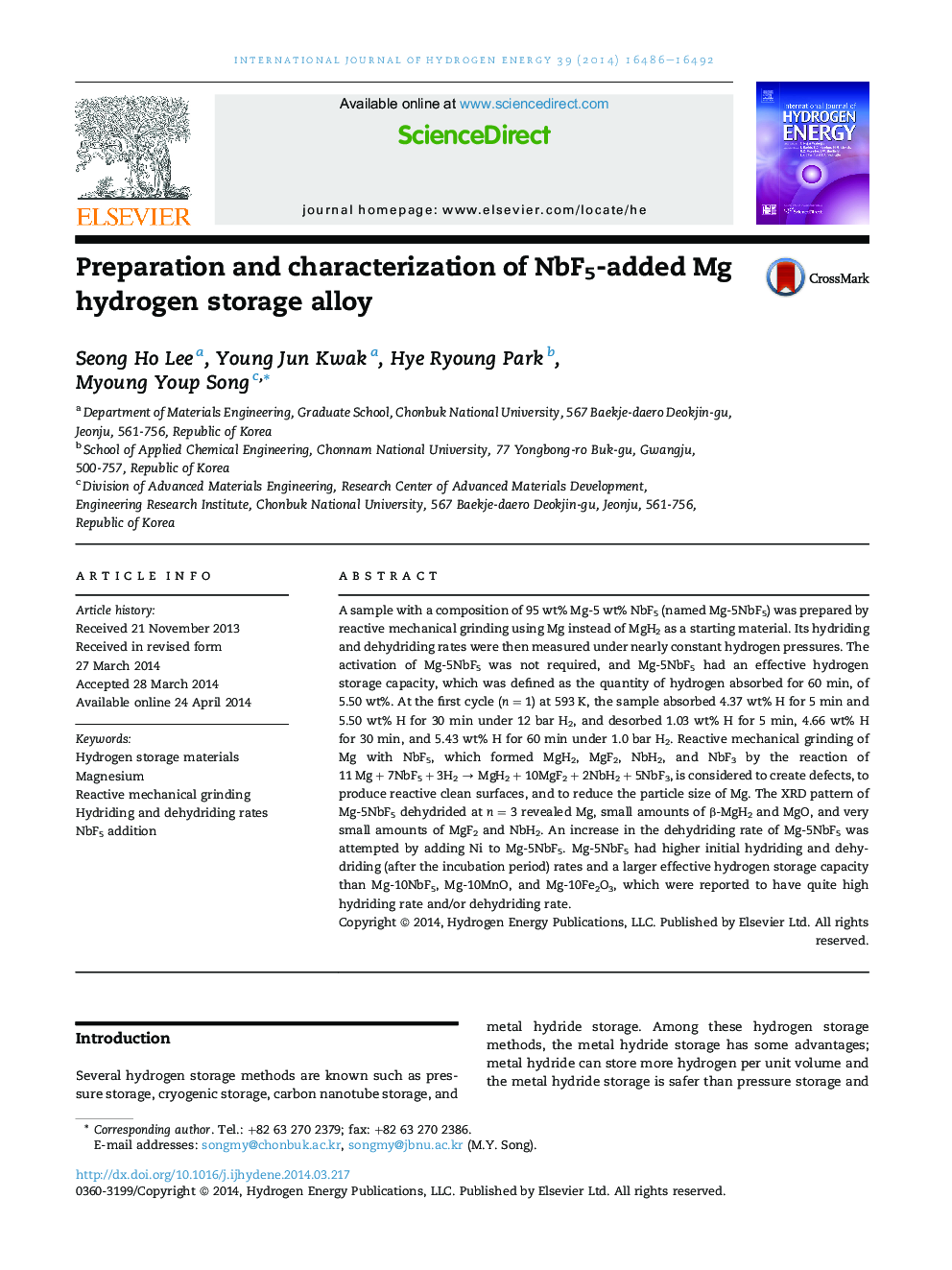| کد مقاله | کد نشریه | سال انتشار | مقاله انگلیسی | نسخه تمام متن |
|---|---|---|---|---|
| 1280986 | 1497480 | 2014 | 7 صفحه PDF | دانلود رایگان |

• Addition of NbF5 to Mg to increase hydriding and dehydriding rates.
• Preparation of 95 wt% Mg-5 wt% NbF5 by reactive mechanical grinding.
• At n = 1, the sample absorbed 5.50 wt% H for 30 min at 593 K under 12 bar H2.
• Mg-5NbF5 dehydrided at n = 3 contained Mg, β-MgH2, MgO, MgF2, and NbH2.
A sample with a composition of 95 wt% Mg-5 wt% NbF5 (named Mg-5NbF5) was prepared by reactive mechanical grinding using Mg instead of MgH2 as a starting material. Its hydriding and dehydriding rates were then measured under nearly constant hydrogen pressures. The activation of Mg-5NbF5 was not required, and Mg-5NbF5 had an effective hydrogen storage capacity, which was defined as the quantity of hydrogen absorbed for 60 min, of 5.50 wt%. At the first cycle (n = 1) at 593 K, the sample absorbed 4.37 wt% H for 5 min and 5.50 wt% H for 30 min under 12 bar H2, and desorbed 1.03 wt% H for 5 min, 4.66 wt% H for 30 min, and 5.43 wt% H for 60 min under 1.0 bar H2. Reactive mechanical grinding of Mg with NbF5, which formed MgH2, MgF2, NbH2, and NbF3 by the reaction of 11 Mg + 7NbF5 + 3H2 → MgH2 + 10MgF2 + 2NbH2 + 5NbF3, is considered to create defects, to produce reactive clean surfaces, and to reduce the particle size of Mg. The XRD pattern of Mg-5NbF5 dehydrided at n = 3 revealed Mg, small amounts of β-MgH2 and MgO, and very small amounts of MgF2 and NbH2. An increase in the dehydriding rate of Mg-5NbF5 was attempted by adding Ni to Mg-5NbF5. Mg-5NbF5 had higher initial hydriding and dehydriding (after the incubation period) rates and a larger effective hydrogen storage capacity than Mg-10NbF5, Mg-10MnO, and Mg-10Fe2O3, which were reported to have quite high hydriding rate and/or dehydriding rate.
Figure optionsDownload as PowerPoint slide
Journal: International Journal of Hydrogen Energy - Volume 39, Issue 29, 2 October 2014, Pages 16486–16492